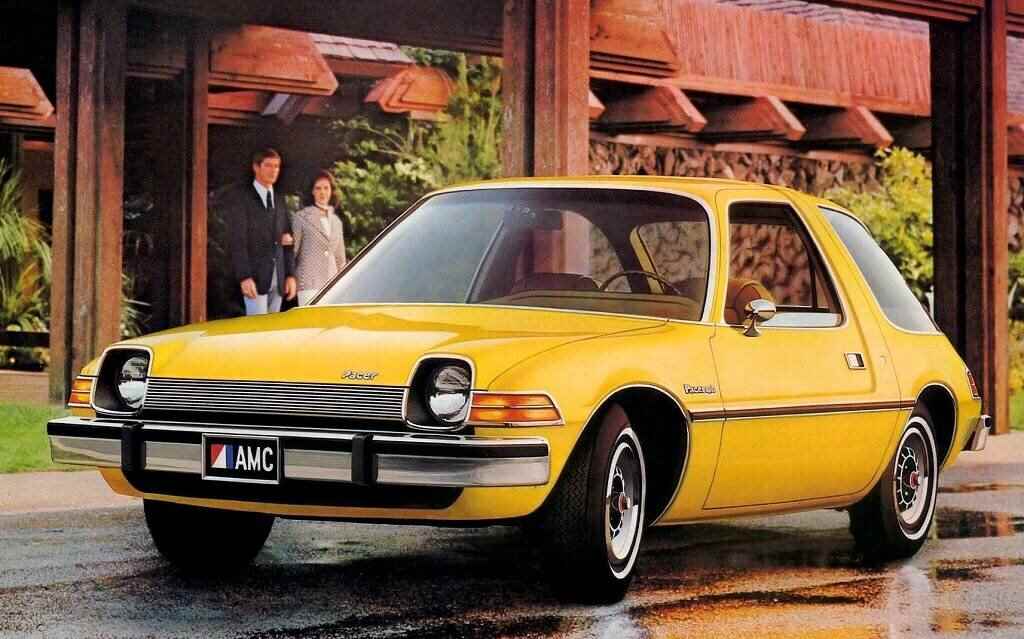When the Pacer arrived on the market in 1975, the press headlined “Suddenly it’s 1980”. In reality, the model will have all the difficulties to make it to that year, despite a brilliant start.
AMC, formed from the merger of Nash and Hudson in 1954, has often been called “the fourth of the big three”. A small manufacturer, it had to compete, at the time, with three of the largest automobile manufacturers in the world. This constantly forced the brand to find original solutions at a lower cost and to launch products that were sufficiently offbeat not to face Ford, GM or Chrysler head-on. It is in this state of mind of “philosophy of difference” that the Pacer was developed.
Amigo Project
We are in 1971. The first oil crisis has not yet taken place. But already, clouds are gathering over the auto industry in the form of new safety and pollution standards. Gerald Meyers, head of product development for AMC, ponders the future. The company is doing well, however, new challenges will have to be met. Meyers thinks AMC can once again become the leader in the compact segment. He envisions a vehicle with a spacious interior, excellent visibility, good handling and, why not, a revolutionary powertrain. The Amigo project is launched.
The first sketches are made at Chuck Mashigan’s design studio. Several ideas are evaluated but one quickly emerges from the crowd. We already find at the rear the almost definitive forms of the Pacer, with large glass surfaces. The front is on the other hand shorter and more plunging with, on certain models, retractable headlights. All this is made possible thanks to the use of a rotary engine, more compact at equivalent power than a traditional 4-stroke engine.
Photo: AMC
Then, the project moves to the compact vehicle studio, headed by Bob Nixon, under the leadership of Dick Teague. First problem, the lawyers are asking that the car be widened and receive additional protections in the event of a side impact, in anticipation of future safety standards that the federal government was considering. This would unbalance the proportions, according to Bob Nixon.
Second problem: the engine. AMC could not afford to develop the rotary engine on its own, so it found a partner in the form of General Motors. GM had acquired the Wankel license in 1970 and had begun studies of two- and four-rotor engines. AMC was supposed to install a twin-rotor block (code RC2-206) under the hood of the Pacer. But GM encountered significant development difficulties (emissions, consumption and reliability).
When it became apparent sometime in 1973 that General Motors could not supply rotary engines, AMC had to turn urgently to its basic inline 6-cylinder, asking to redesign and redesign part of the front end. The firewall was modified to be able to move the classic block back as far as possible. The suspension setting was also completely revised. As for GM, it officially renounced the rotary mill on September 24, 1974. The first oil crisis had passed by there and it was unthinkable to release such an energy-guzzling engine.
The Pacer was finally ready to go into production at the Kenosha, Wisconsin plant in August 1974. Unfortunately, a strike forced AMC to start assembly only in January 1975. The car was presented to the public February 28, 1975.
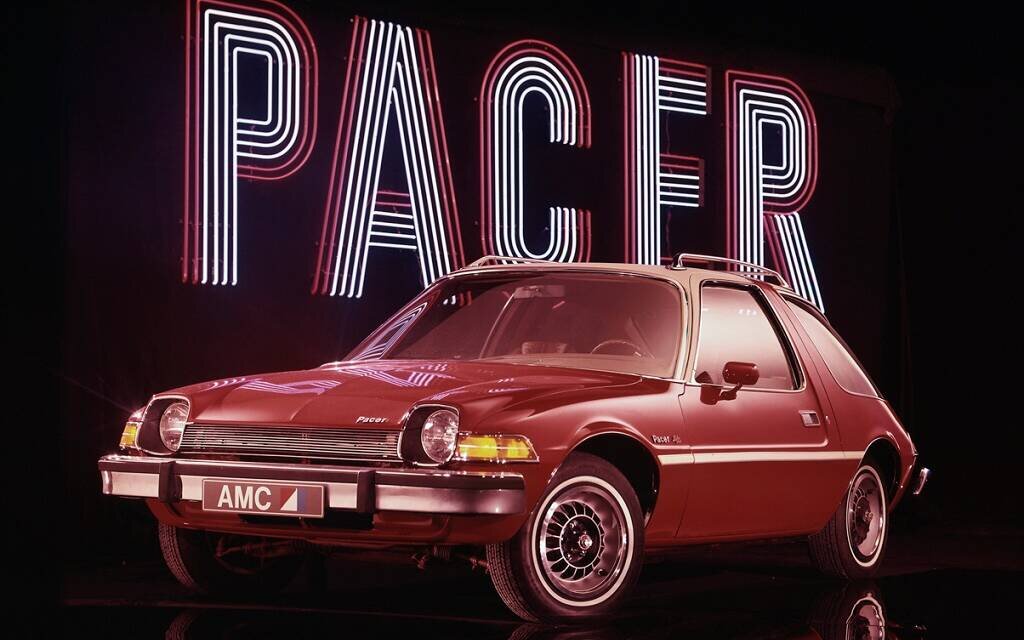
Photo: AMC
Rocket start
The least we can say is that the Pacer has unique proportions for the time. Compared to its cousin, the Gremlin, it is based on a longer wheelbase (2,540 mm against 2,438) while it is barely longer (4,364 mm against 4,326). But above all, it is significantly wider (1,963 mm against 1,793), thus approaching higher category models. To demonstrate this fact, AMC will fit a Chevrolet Nova into a full-scale model of a Pacer front end for its promotional materials.
Another important difference is the weight: 1,360 kilos, or 136 kilos against the Pacer. And again, this is only the basic version, not particularly well endowed. To get equipment like disc brakes, automatic transmission, power steering or a front anti-roll bar, there is an extra bucks and pounds. Another almost indispensable option: air conditioning (or at least window vents). Because the Pacer has a large glazed surface (3.62 m², or 37% of the total surface of the car or 50% more than the average compact).
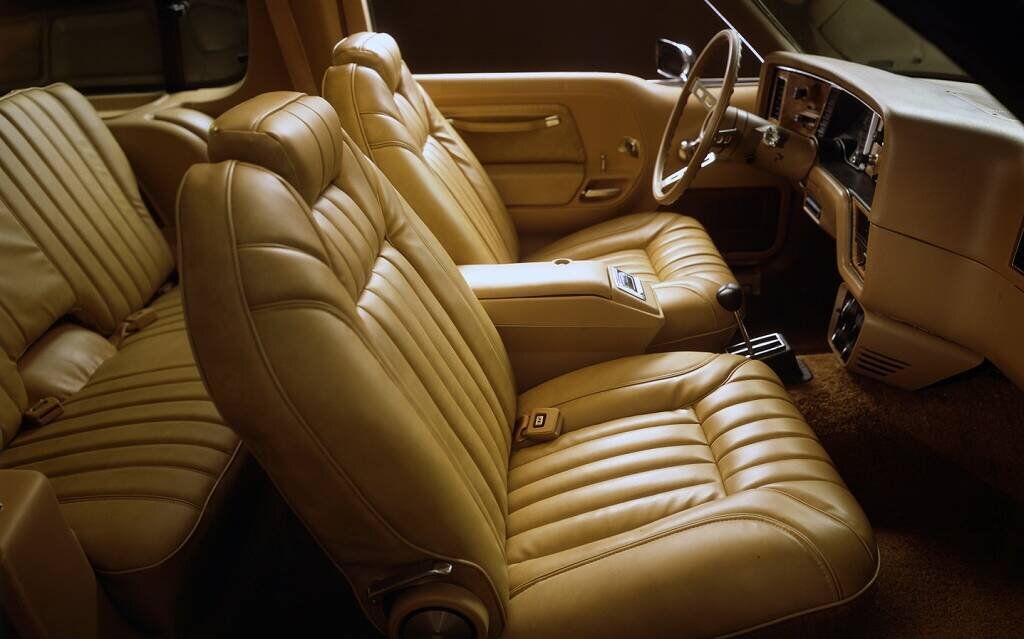
Photo: AMC
Under the heat, it becomes an oven. The belt line is so low that the storm doors are raised for the comfort of the occupants. Another originality, the passenger door is longer by 10 centimeters, to facilitate access to the rear seats. Interior space is one of the Pacer’s strengths. In terms of habitability ratings, it is similar to the Cadillac Eldorado, which however is 1.35m longer. The folding bench comes standard.
Under the hood, we find the faithful 6-cylinder 232 hp (3.8 liters) launched in 1964 and developing 100 horsepower. A 258 hp (4.2 liter) 6-cylinder good for 110 horsepower was available as an option (a 120 horsepower two-barrel carburetor version will also be offered during the year). Both benefit from electronic ignition. On the transmission side, a 3-speed manual with steering wheel shift comes standard while a 3-speed manual with floor shift or a 3-speed automatic (supplied by Chrysler) are optional. An overdriver (overdrive) Laycock de Normanville is also available. The Pacer will be the only AMC sold with rack-and-pinion steering.
Base price for the Pacer was US$3,299 (CAD$3,995). The optional “sporty” X Package offered bucket seats, floor-mounted gearshift, sports steering wheel, additional soundproofing, Exterior Decor Package, 5-spoke wheels and front anti-roll bar. The optional D/L package (for De Luxe) gave access to reclining bucket seats with exclusive “Basketry Print” fabric, a faux wood finish on the steering wheel and the dashboard, a trunk mat, the Exterior Appearance Package and additional soundproofing.
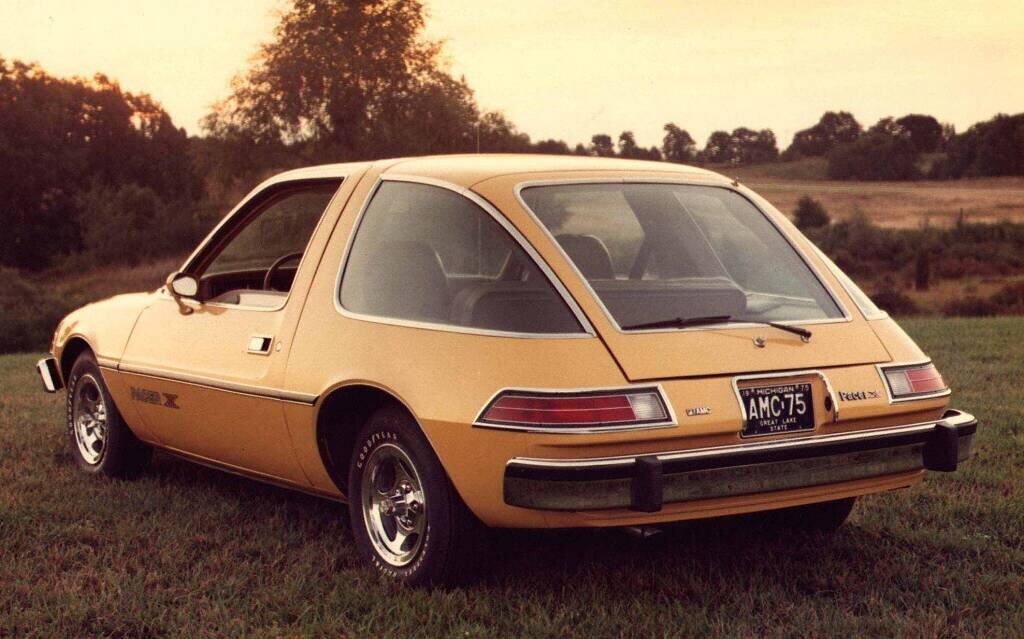
Photo: AMC
At the presentation, customers rushed to the dealerships. AMC had to revise its production capacities upwards. By the end of the year, the brand had manufactured 72,158 units, yet failed to meet demand. The oil crisis had hit AMC head on, and the introduction of the Pacer had cost the company dearly, which would suffer losses in 1975. But with such success in hand, AMC executives were certain of a rapid return to profitability.
A rapid fall
The following vintage logically brought only few changes. New options appear: extended axle ratio for economy, 4-speed manual gearbox, Rally package (central console, clock and instrument cluster). A special Sundowner series is offered during the year. Production is up (117,244) but this is due to demand from the previous year. In fact, showroom traffic is down and sales are already starting to take a hit.
The 1977 model year introduced one of the most significant innovations in the history of the Pacer in the form of a second body: the station wagon. The rear overhang is extended by 10 centimeters, which increases the loading volume from 835 liters to 1,354. The D/L family versions are entitled to faux wood trim. The station wagon would instantly become more popular than the coupe until the end of the Pacer’s career.
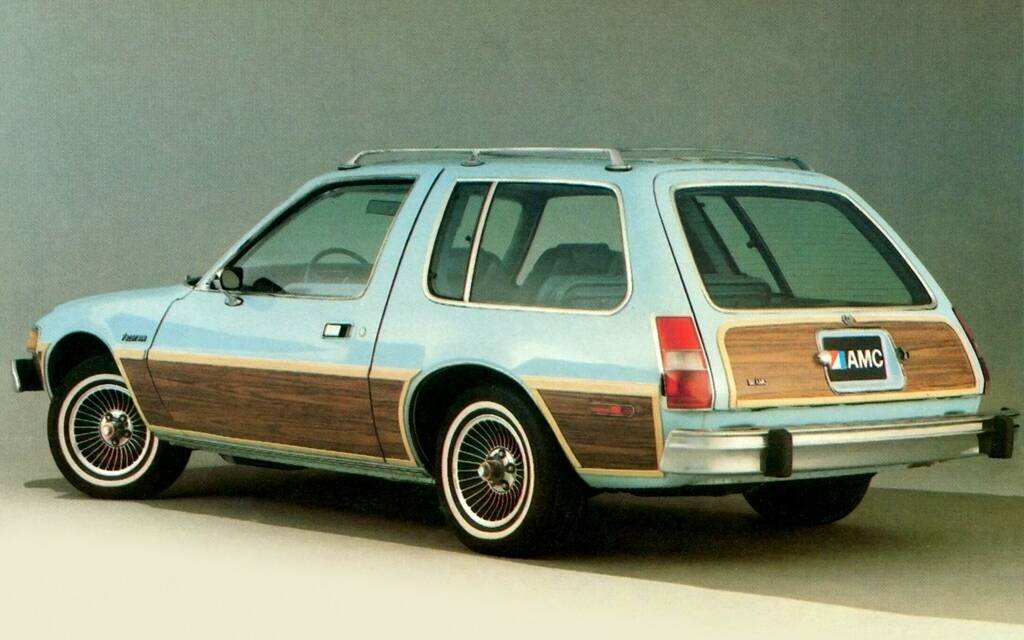
Photo: AMC
Other novelties: the disappearance of the 258 pc of 110 horsepower, the remaining engines are given for 88 and 114 horsepower, disc brakes become standard and Levi’s upholstery is available as an option. AMC will test versions with the original 4-cylinder Audi fitted in the Gremlin since 1977… without much success, the car being too heavy. Despite the novelties, production took a serious hit: 58,264 copies (including 20,265 coupés and 37,999 wagons). AMC is now in a difficult financial situation and some talk about the disappearance of the brand.
A 304 cf (5 liter) V8 developing 130 horsepower and an enlarged grille (to accommodate the V8) are the significant changes for 1978. The lineup is simplified (the D/L version becomes the base model and the X group is replaced by a Sport package), and the tank is reduced from 22 to 20 gallons. Sales literally plummet and AMC produces only 21,231 copies (7,411 coupes and 13,820 wagons, only 2,514 Pacers will receive the V8). If the company made a profit that year, it was thanks to the Jeep division.
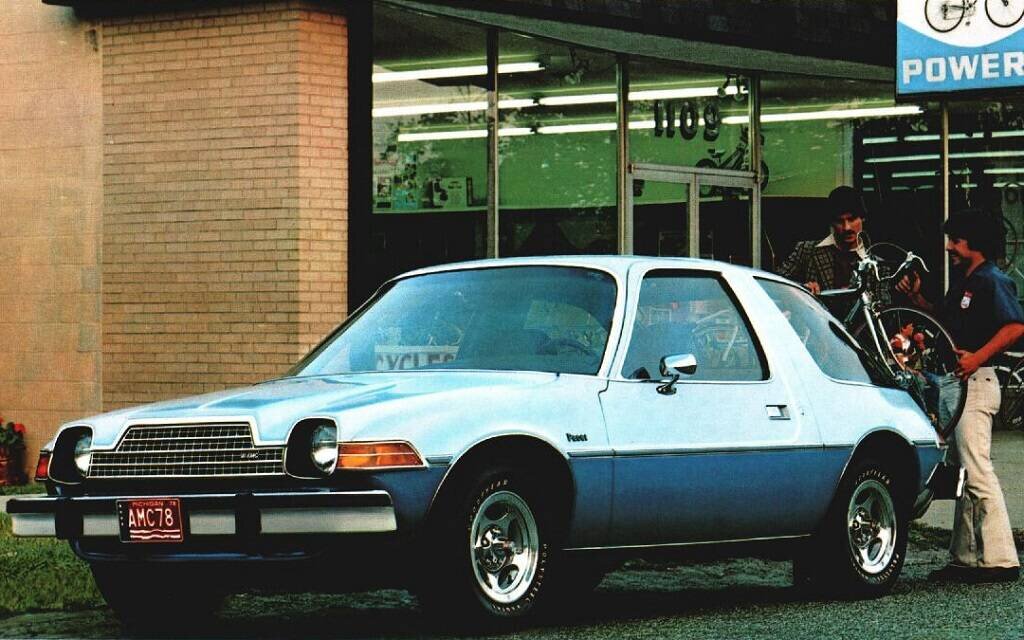
Photo: AMC
The basic 6-cylinder disappeared in 1979 when the V8 only developed 125 horsepower. The base model becomes DL (without the slash) and a Limited version is added. It includes leather interior, electric comfort, tilt steering wheel and standard AM radio. But nothing helped, the dark Pacer: 10,215 copies produced (2,863 coupes and 7,352 wagons, 1,014 Pacers equipped with the V8). The year saw the start of the association with Renault. The Pacer no longer interests anyone at AMC.
The 1980 vintage ended abruptly on December 3, 1979 after only 1,746 units were produced (405 coupés, 1,341 wagons, the V8 disappeared). The Pacer is rolling off the assembly line for good!
The bad joke
The Pacer was only manufactured for six years (280,858 copies). Desirable when it was launched, it quickly became a joke in the automotive world. Among the reasons, we can cite the unusual design, anemic performance, sometimes questionable reliability, poorly adapted marketing and a second oil crisis in 1979.
Japanese competition will also have caused him serious harm. Gerald Meyers’ experiment did not turn out as planned. We’ll have to wait for the movie Wayne’s World in 1992 so that the Pacer becomes (a little) cool again with, it is true, a good dose of irony. Party time Wayne! Excellent!
PS: The original Mirthmobile from the movie sold at auction for US$71,500 in early 2022.
